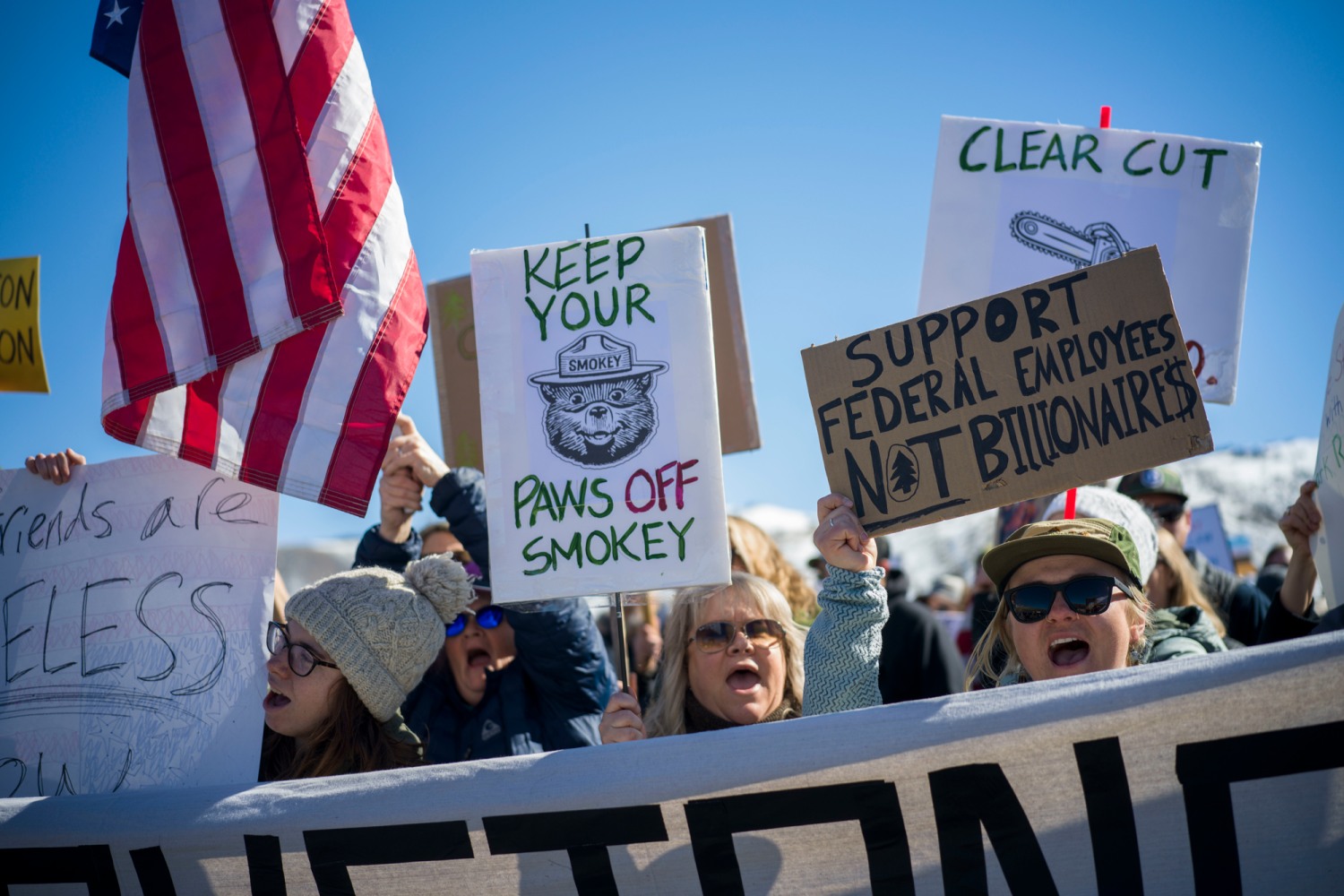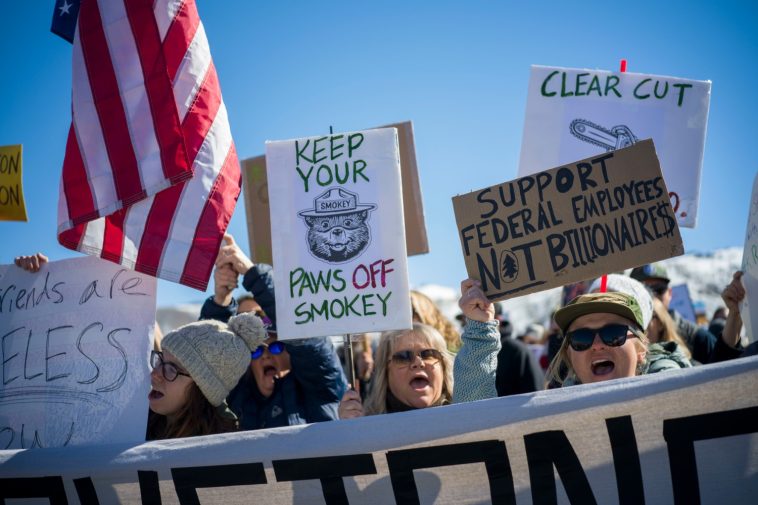
Opinion Editorial: Weighing the Consequences of a Government Shutdown on Our National Parks
The looming possibility of a government shutdown has raised heated debates among national park enthusiasts, state officials, and environmental watchdogs alike. As former national park superintendents call for the closure of parks in the face of staffing and budget cuts, we find ourselves at a crossroads between preserving public safety and ensuring long-term conservation of these beloved natural treasures. In this editorial, we take a closer look at the situation, exploring the tricky parts behind staff reductions, the potential economic fallout, and how park closures may affect both visitors and the environment.
Many voices in the national and local communities are expressing their frustration, pointing out that opening parks with minimal staff is not only risky but also a disservice to the legacy of our most treasured public lands. In the following sections, we dive in to get into the finer details of what a shutdown could mean and why proactive measures might just be the key to protecting both park ecosystems and visitor experiences.
Government Shutdown National Park Safety Concerns
One of the primary concerns with keeping national parks open during a shutdown is the potential for public safety hazards. Former superintendents have highlighted that low staffing levels can lead to a number of unintended safety issues. Without the essential manpower to oversee park operations, maintenance tasks such as trash collection, trail repairs, and emergency response procedures are compromised.
The following are some of the key safety issues brought up by the experts:
- Unattended park infrastructure may result in accidents for unsuspecting visitors.
- Lack of routine maintenance increases the risk of hazardous trail conditions.
- Emergency situations might not be properly managed without adequate staff present.
- Disruptions in educational programs could leave visitors without the necessary guidance on safe engagement with nature.
When visitors rely on park staff to solve the tangled issues of operational upkeep and natural resource management, the absence of oversight creates a nerve-racking environment that could lead to both environmental damage and personal injury.
Economic and Environmental Impact of Park Understaffing
The economic arguments surrounding national park operations are as charged as the safety concerns. National parks serve as a major tourist draw for many rural communities, fueling local businesses and supporting thousands of jobs. Yet, when a government shutdown forces parks to operate with drastically reduced staffing, the ripple effects can be significant.
A detailed analysis reveals several economic and environmental challenges:
- Loss of Tourism Revenue: With fewer visitors or delayed restoration work, local economies that depend on park tourism may suffer.
- Environmental Degradation: Understaffed parks are unable to maintain sensitive areas, leading to problems like vandalism or unintentional ecosystem damage.
- Long-Term Conservation Risks: Reduced monitoring can lead to irreversible damage to habitats and wildlife, impacting biodiversity for years to come.
Moreover, the reduction of park staff is a complicated piece of the larger issue of federal budget cuts. With park budgets slashed by nearly a quarter, the fine points of preservation become even more difficult to manage. The reduction isn’t merely a matter of saving money in the short term—it runs the risk of creating an environment loaded with issues for both natural resources and the communities that cherish them.
State-Level Intervention: A Debate on National Park Operations
In the midst of this debate, state officials have begun advocating for more involvement in national park operations. For example, Colorado’s Gov. Jared Polis has floated the idea of using limited state funds to help keep parks open and staffed during potential shutdowns. Supporters of this approach argue that national parks are a key economic driver, especially during high-tourist seasons like leaf peeping in autumn.
However, this proposal is not without its contentious twists and turns. Here are some of the main points raised by both proponents and critics:
- Proponents say:
- State intervention could ensure that parks remain safe and welcoming to the public.
- It supports the local economies that rely on steady visitor flows.
- An infusion of state funds might mitigate the most intimidating safety risks of operating with reduced staffing.
- Critics contend:
- National parks are fundamentally a federal responsibility, and state funding should not replace national oversight.
- Relying on state funds might create administrative confusion and misaligned priorities between state and federal agencies.
- It could set a precedent where parks are forced to contend with multiple layers of budget cuts and oversight issues.
While state-led initiatives might provide a temporary fix, long-term solutions require a coordinated effort between federal agencies and state governments to ensure that our parks are both accessible and secure without sacrificing the quality of conservation work.
Historical Lessons: Shutdown Precedents and Their Aftermath
A brief look into history reveals cramped conditions and heavy fallout resulting from previous government shutdowns. During the shutdowns of 2018 and 2019, many national parks stayed open with minimal oversight, leading to several disturbing incidents. Some visitors unknowingly left deep impressions on fragile ecosystems, and authorities reported cases of vandalism and unauthorized trail creation.
These events underscore critical, well-documented lessons:
- The absence of sufficient park staff during periods of operational limbo can result in irrevocable ecological damage.
- Historical shutdowns have shown that without proactive management, visitor safety and park resource integrity decline rapidly.
- The economic repercussions extend beyond the park boundaries, affecting local businesses and community livelihoods as well.
Such historical evidence should prompt federal leaders to ponder over the best way to manage park operations during a downtime. Many argue that closing parks might be a safer option rather than risking both visitor injury and severe environmental degradation.
Budget Cuts and Their Direct Influence on Park Management
Arguably, one of the most critical pieces in this puzzle is the ongoing federal budget cuts that burden national parks. A severe 24% decrease in park staffing has left many iconic parks vulnerable and understaffed, creating a state of emergent chaos whenever a shutdown occurs.
It is helpful to break down some of the direct effects of these cuts:
| Impact Area | Observed Effects |
|---|---|
| Maintenance | Missed trash pickups, irregular trail repairs, and declined facility upkeep |
| Visitor Safety | Increased risk of accidents, unmonitored visitor behavior, and delayed emergency response |
| Environmental Preservation | Heightened vulnerability to vandalism and unintended ecological degradation |
| Educational Outreach | Disrupted programs that help visitors appreciate and safely explore nature |
This table illustrates some of the small, yet significant, details that have far-reaching consequences. The fine shades between partial staff presence and complete shutdown cannot be ignored, as each decision weighs heavily on the future of these cherished lands.
Safety Versus Accessibility: The Balancing Act
Maintaining a balance between safety protocols and public access is key to the discussions about shutdown contingency plans. While the general public eagerly awaits clear guidance on whether parks will remain safely accessible in the dark hours of a federal impasse, the complexities of scheduling and staffing have turned this into one of the most challenging decisions for park management professionals.
Several areas of concern include:
- Ensuring that only authorized visitors enter parks when staffing is insufficient.
- Implementing temporary barriers to protect sensitive areas.
- Communicating clearly with the public about available amenities and potential hazards.
Critical to this discussion is the thought that national parks do not operate in isolation. The presence of trained staff is super important not just for routine cleaning and upkeep, but for guiding visitors through the confusing bits of park regulations and ensuring the preservation of both flora and fauna. The current debate suggests that maintaining open parks under a low-staff situation could well be a recipe for unforeseen mishaps and irreversible damage.
Examining the Broader Environmental Impact
Beyond visitor safety and economic implications, the impact on the environment must be factored in when considering park closures during a shutdown. With less staff to maintain the ecological balance, the parks risk becoming hotspots for both deliberate vandalism and inadvertent harm caused by visitors.
Environmental experts raise several key points:
- Lack of routine monitoring may lead to invasive species or unchecked wildlife disruptions.
- The absence of preservation measures can intensify the degradation of sensitive habitats.
- The cumulative effect of these issues adds up to a long-term threat to biodiversity.
Indeed, when the real-life outcomes of reduced environmental oversight are considered, it becomes clear that planning for a shutdown must involve preserving the nitty-gritty of local ecosystems. Just as one wouldn’t leave a museum open without a curator, leaving national parks open without professional management exposes irreplaceable habitats to a host of accidental and malicious acts.
The Role of Federal Leadership and Policy Recommendations
Amid these nerve-racking times, federal leadership is being called upon to step in with policies that place visitor safety and environmental protection at the forefront. Former superintendents have boldly suggested that in the case of a shutdown, national parks should be closed to the public. Their rationale is simple: without enough staff to figure a path through the routine maintenance tasks and emergency support, even a partially open park becomes a liability.
Key policy recommendations include:
- Temporarily closing parks to ensure that maintenance and safety protocols can resume before reopening to the public.
- Allocating emergency funds or state support to keep essential services operational during federal shutdowns.
- Implementing a clear framework to manage parks safely during periods of limited staffing.
- Investing in backup systems and training additional personnel to cover for reduced numbers during government shutdowns.
It is super important for policy makers to recognize that while national parks are open to everyone, the safety and conservation measures that make them truly special cannot be compromised. With a proactive approach, both state and federal governments can work together to manage these tricky parts of park operations and help steer through the turbulent times of federal financial uncertainty.
Community Voices: The Human Side of Shutdown Debates
Another angle that must not be overlooked is the human dimension of a potential national park shutdown. Local communities that rely on these parks for tourism and economic activity face considerable hardships when operations grind to a halt. Small businesses, hotels, and even food services in the surrounding areas brace themselves for a drop in visitation, which can ripple into jobs and overall local prosperity.
A few key points raised by community members include:
- Economic Dependencies: Many towns bordering national parks thrive on the flow of tourists who drive local trade.
- Emotional and Cultural Significance: National parks are a part of local identity and heritage, treasured by residents and visitors alike.
- Demand for Transparency: Citizens are calling for clearer, more timely communication from federal leaders during shutdown scenarios.
This blend of practical and sentimental concerns underscores why any discussion of park operations must include local voices. The frightening reality is that without careful planning, the shutdown’s aftereffects might be full of problems not only for environmental stewards but also for the communities that foster a deep, shared connection with nature.
Technological Solutions and Future Planning
While staffing shortages and budget cuts present acute challenges, the integration of modern technology offers a potential path forward. Remote monitoring systems, automated security measures, and digital visitor tracking can provide interim solutions during staffing crises. Although these measures are not a complete substitute for human oversight, they help address some of the subtle parts involved in maintaining park operations.
Some technological innovations that could be considered include:
- Automated Surveillance: Cameras and sensor systems to monitor high-traffic areas and quickly notify authorities if issues arise.
- Digital Visitor Check-In Systems: Software that controls park entry to avoid overcrowding in the absence of sufficient staff.
- Remote Environmental Monitoring: Sensors that keep track of air quality, water conditions, and other key markers of ecosystem health.
- Mobile Maintenance Reporting: Apps that allow visitors to report issues directly, enabling rapid response even when staff is thin.
Although these technological fixes are not perfect, they can serve as stopgap measures to ensure that even if parks must remain open during a shutdown, the resulting safety and environmental concerns are mitigated as best as possible. It is critical to remember that technology should complement, not replace, the super important role of trained National Park Service employees who are the custodians of these lands.
Preserving National Parks for Future Generations
Looking beyond the immediate crisis of a potential shutdown, we must consider the long-term implications of underfunded national parks. For future generations, these parks represent more than just recreational spaces—they are living classrooms that educate us about biodiversity, conservation, and the timeless beauty of untouched wilderness.
The preservation of national parks hinges on the careful balance between public access and the protection of natural resources. The current debates provide a stark reminder that every policy decision has lasting ramifications on the environmental legacy we leave behind.
Key strategies to preserve national parks include:
- Reevaluating budget allocations to prioritize long-term conservation and infrastructure maintenance.
- Fostering partnerships between federal agencies, state governments, and local communities.
- Encouraging public awareness campaigns that stress the importance of respecting natural habitats and adhering to park guidelines.
- Investing in education initiatives that highlight how each visitor contributes to the park’s well-being.
As we tackle these challenging decisions, it is important for every stakeholder—from the federal government to local residents—to think about how today’s choices impact the parks of tomorrow. Without adequate funding and staff, once pristine lands can quickly transform into places of decline, robbed of their subtle beauty and delicate ecosystems.
Political Ramifications: Beyond the Park Boundaries
The debate surrounding a government shutdown and its effect on national parks is not solely a matter of preserving nature—it reflects broader political tensions that influence many aspects of public administration in the United States. Decisions made in Washington ripple outwards, affecting not only our natural resources but also our national identity and the trust between government institutions and citizens.
Key political considerations include:
- Accountability: Citizens are increasingly demanding that elected officials take decisive action to avoid crippling shutdowns that jeopardize public safety and environmental conservation.
- Intergovernmental Collaboration: The potential for state intervention in federal operations raises questions about the proper balance of power and responsibility.
- Transparency: Ensuring that decisions regarding park operations and closures are communicated clearly can help restore trust in public institutions during times of crisis.
- Precedent Setting: The way the current administration handles these challenges will likely set a benchmark for future government responses during budget impasses.
These political nuances add an extra layer of tension to the overall discussion. What might seem like a purely logistical problem on the surface—ensuring parks are staffed during a shutdown—brings with it the heavy responsibility of safeguarding our cultural and natural heritage. The call by former superintendents to close parks until proper staffing can be ensured is not simply a criticism; it is a plea for responsible governance that prioritizes both human safety and environmental integrity.
Charting a Way Forward for National Park Policy
In conclusion, facing the prospect of a government shutdown forces us to examine deeply our national priorities. The call for park closures during such times is loaded with implications for public safety, local economies, and the long-term conservation of irreplaceable natural resources. As we poke around the possible solutions, several clear takeaways emerge from this debate:
- The need to properly staff national parks is more than just a bureaucratic matter—it is about protecting visitors, preserving ecosystems, and safeguarding a key part of American heritage.
- Both federal and state leaders have a role to play. While state intervention may provide temporary relief, fundamental questions about national funding and oversight remain.
- Historical shutdowns have shown that without active monitoring and maintenance, the subsequent damage is not just immediate, but far-reaching in its economic and environmental impacts.
- Technological measures can help bridge some gaps, but they cannot replace the human touch needed to manage the on-the-ground realities of park operations.
As policy makers consider whether to preemptively close parks or risk keeping them open with reduced staffing, the decision will have repercussions that extend well beyond the immediate timeline. It calls for a coordinated approach that respects the safe enjoyment of our parks while ensuring their conservation for future generations.
Final Thoughts: A Call for Proactive and Thoughtful Leadership
Ultimately, the national park system stands as a symbol of America’s commitment to conservation and public access to natural beauty. The current debate over shutting down parks during a government impasse is a microcosm of larger issues about how we value nature, safety, and our shared cultural legacy. While the measures proposed by former national park superintendents are meant to prevent reckless outcomes during a shutdown, their recommendations invite us to think more critically about our dependence on federal funding, the role of state intervention, and the fine distinctions between manageable risks and those that could lead to serious harm.
Visitors, local communities, and the very ecosystems that define our national parks all deserve leadership that is willing to tackle these complicated pieces head-on, before the situation escalates into a full-blown crisis. Whether it means temporary closures, reallocating emergency funds, or investing in state-of-the-art monitoring systems, the solutions must be multi-faceted, transparent, and aimed at preserving the delicate balance between human enjoyment and environmental stewardship.
In these tense times, as we work through the twists and turns of federal budget policies and park management strategies, no one should lose sight of what makes our national parks so extraordinary. They aren’t merely public spaces; they are living monuments to the beauty and endurance of the natural world. And preserving them is a responsibility that calls for proactive, thoughtful, and united leadership from all levels of government.
Key Takeaways
Before closing this discussion, here is a summary of the key points addressed in this editorial:
- Staff reductions during a government shutdown pose significant safety and environmental risks.
- Economic impacts from reduced tourism can harm local communities dependent on park-related revenue.
- The debate over state intervention reveals deep political and administrative challenges in managing national parks.
- Historical precedents offer valuable lessons on the serious ramifications of a shutdown.
- Technological solutions, while useful, cannot completely substitute the importance of trained park staff.
- A balanced approach to public access and preservation is critical for sustaining our national treasures.
Conclusion
As we face the possibility of a government shutdown, now is the time to have big, honest conversations about how we value our national parks. Whether you are a frequent visitor, a local resident, or someone who simply cherishes the beauty of nature, let us support efforts aimed at ensuring that these iconic spaces remain safe, clean, and vibrant for generations to come.
The discussion over park closures amid staffing shortages is not merely academic—it is a testament to the challenges of modern governance. By embracing transparent leadership, investing in both human and technological resources, and listening to the voices of those who know these lands best, we can make informed choices that safeguard our national parks and, in turn, our shared future.
Originally Post From https://www.the-journal.com/articles/former-national-park-superintendents-urge-trump-administration-to-close-parks-in-case-of-shutdown/


